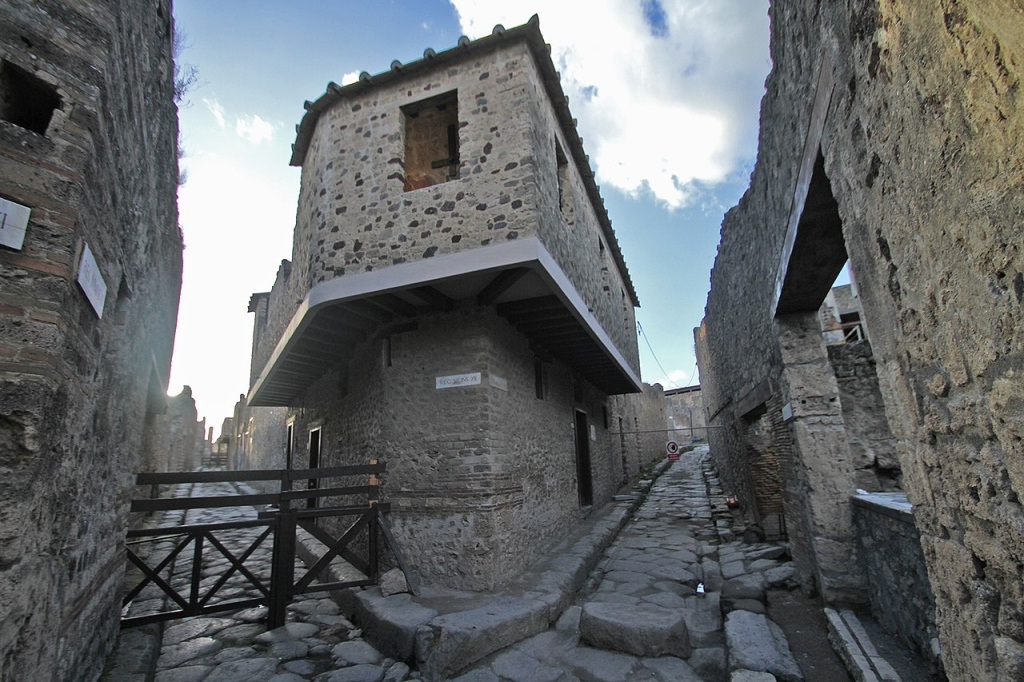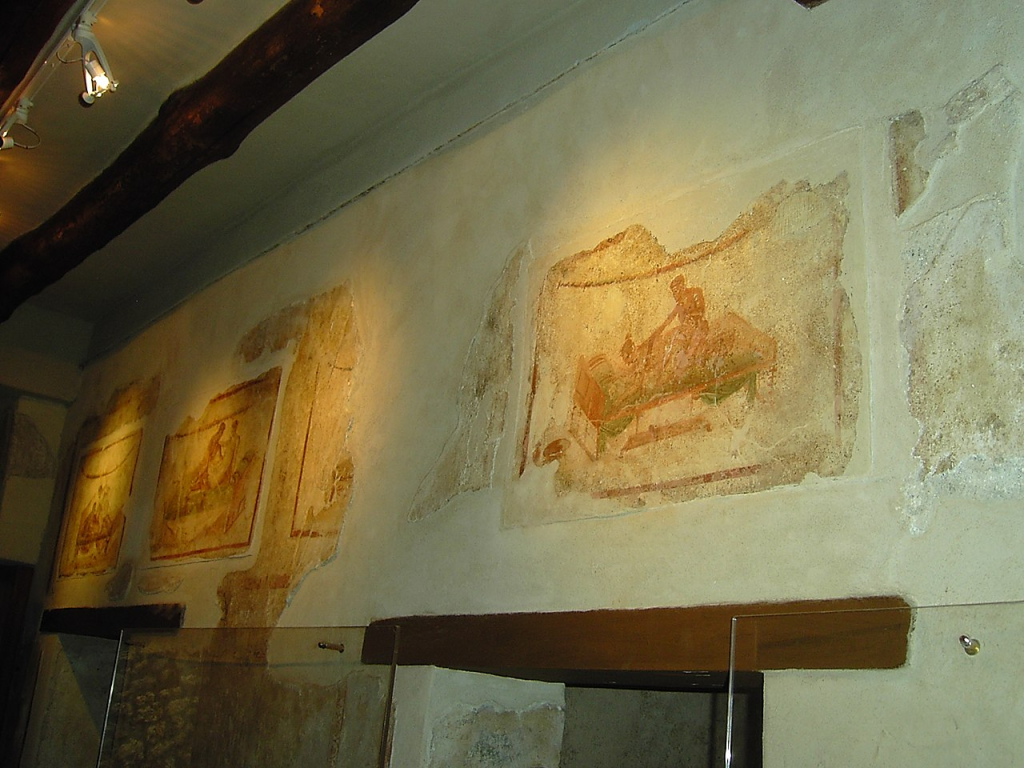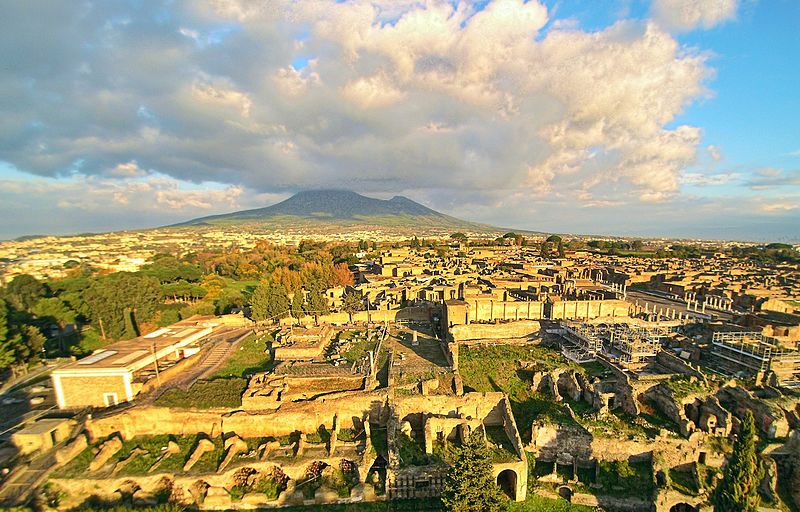In the grand tapestry of ancient Rome, we often envision mad emperors, valiant warriors, brutal spectacles, and hedonistic lifestyles. Yet, beneath these iconic images lies a hidden world—one of secrecy, sensuality, and indulgence. The whispered rumors of Roman emperors’ escapades and their revelry in the pleasures of the flesh have tantalized historians for centuries. However, it was not until the remarkable discovery of Pompeii in the 16th century that the veiled pleasures of the Romans were unveiled, shedding light on a world that had long remained in the shadows of history.
Pompeii: A Glimpse into Roman Life Preserved

Pompeii, a Roman city dating back to the 6th century BC, found itself frozen in time by the devastating eruption of Mount Vesuvius in 79 AD. Although its rediscovery occurred towards the end of the 16th century, it wasn’t until the 18th century that comprehensive excavations commenced. These excavations revealed a city remarkably intact, a snapshot of life in ancient Rome. Here, loaves of bread remained in ovens, and the fear-stricken expressions of the city’s residents were captured for eternity, offering unprecedented insights into the daily lives of the Romans, including their pursuit of pleasure.
Lupanare in Pompeii
Archaeologists meticulously unearthed evidence of numerous brothels within Pompeii. These establishments were identified through the discovery of explicit frescoes and graffiti adorning the walls of buildings containing multiple rooms furnished with stone beds. Phallic symbols, believed to bring good luck, were prevalent in Pompeii’s decor, gracing not only the brothels but also private homes and public spaces.
One prominent brothel in ancient Pompeii bore the name “Lupanare,” translating to “wolf’s den” in Latin. Now designated as a UNESCO World Heritage Site, this two-story structure was constructed shortly before Pompeii’s tragic demise. It boasted ten rooms, each featuring a stone bed covered with a mattress where prostitutes entertained their clients. Yet, what truly set the Lupanare apart were its erotic wall paintings, each depicting various sexual positions—a primitive form of advertising.
However, it’s worth noting that these erotic depictions may have portrayed an idealized version of sex, akin to contemporary pornography. The reality for the prostitutes who worked in the Lupanare was likely far grimmer. The chambers where they plied their trade were windowless, cramped, and uncomfortable, separated from an anteroom only by curtains. Many of these women were believed to be slaves of Oriental or Greek origin, with limited alternatives for employment. Dr. Kelly Olson, a professor of classical studies, remarked, “it’s not a very nice place to work” during a visit to the Lupanare.

While the prostitutes endured challenging conditions, their clients appeared to have enjoyed their visits, as evidenced by the graffiti they left behind. Over 100 inscriptions on the Lupanare’s walls bear witness to their amorous encounters. One inscription simply reads, “I screwed a lot of girls here.” Another even records a specific visit: “On June 15th, Hermeros screwed here with Phileterus and Caphisus.” It’s likely that these patrons were ordinary Romans, as the wealthier members of society could afford mistresses or slave concubines.
Interestingly, these inscriptions also provide insights into the prices for services at the Lupanare. It appears that two loaves of bread and half a liter of wine were sufficient to secure the services of a prostitute. Notably, these fees went to the brothel owner, rather than the women themselves, shedding light on the harsh realities of their profession.
The Legacy of the Lupanare: From Scandal to Restoration
The excavation of the Lupanare began in 1862, revealing nearly 2,000-year-old erotic panels on its ground floor. These explicit frescoes, considered scandalous at the time, were initially covered. Some reports suggest that only male visitors were permitted to view them for an additional fee until the 1960s. Ultimately, the ancient brothel underwent restoration and was opened to the public following a substantial investment of $253,000.
Many of the more provocative artifacts uncovered in Pompeii, including erotic objects, were deemed scandalous and removed to the Naples National Archaeological Museum. These items were housed in the Gabinetto Segreto, or “Secret Cabinet,” established by Frances I, the King of Naples. Access to this collection was restricted to “people of mature age and respected morals” and was only made public in 2000.
Today, the restored Lupanare stands as a testament to the intriguing world of prostitution in ancient Pompeii, inviting tourists to explore its history. Regrettably, some visitors have gone to extreme lengths, attempting to reenact the sexual escapades of the Romans by breaking into the brothel or the suburban baths, seeking to fulfill their fantasies.
Conclusion
The Lupanare in ancient Pompeii is a remarkable window into the sensuous and secretive world of Roman pleasure. Its erotic art, graffiti, and inscriptions offer glimpses of the desires and experiences of both prostitutes and patrons. While it may not have been a pleasant profession for the women involved, the Lupanare remains a testament to the multifaceted and enigmatic nature of ancient Pompeii.



